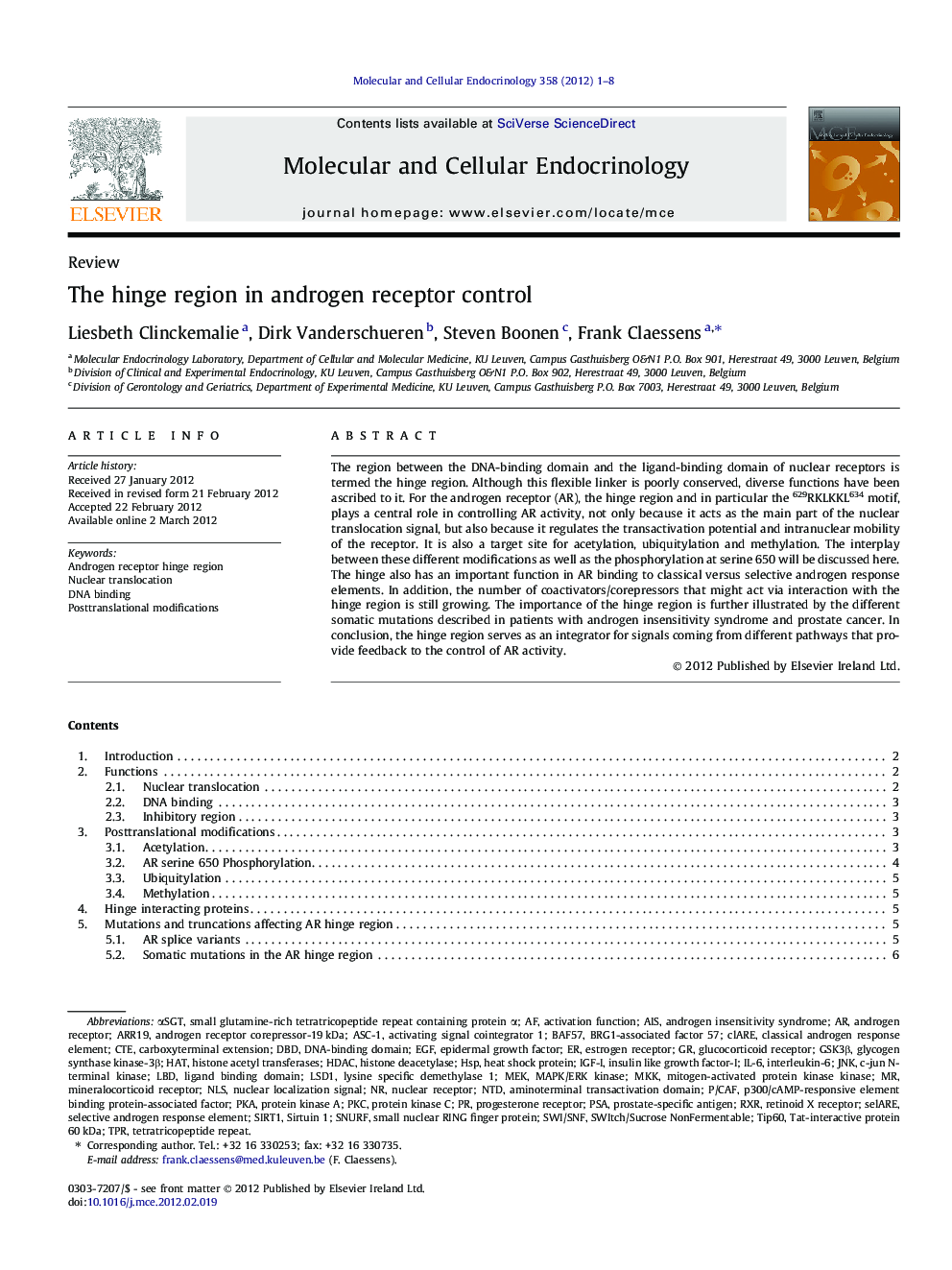| کد مقاله | کد نشریه | سال انتشار | مقاله انگلیسی | نسخه تمام متن |
|---|---|---|---|---|
| 2196302 | 1098808 | 2012 | 8 صفحه PDF | دانلود رایگان |

The region between the DNA-binding domain and the ligand-binding domain of nuclear receptors is termed the hinge region. Although this flexible linker is poorly conserved, diverse functions have been ascribed to it. For the androgen receptor (AR), the hinge region and in particular the 629RKLKKL634 motif, plays a central role in controlling AR activity, not only because it acts as the main part of the nuclear translocation signal, but also because it regulates the transactivation potential and intranuclear mobility of the receptor. It is also a target site for acetylation, ubiquitylation and methylation. The interplay between these different modifications as well as the phosphorylation at serine 650 will be discussed here. The hinge also has an important function in AR binding to classical versus selective androgen response elements. In addition, the number of coactivators/corepressors that might act via interaction with the hinge region is still growing. The importance of the hinge region is further illustrated by the different somatic mutations described in patients with androgen insensitivity syndrome and prostate cancer. In conclusion, the hinge region serves as an integrator for signals coming from different pathways that provide feedback to the control of AR activity.
► The hinge region is more than a connection between DNA and ligand binding domain.
► The AR hinge is important for differentiating between clAREs and selAREs.
► AR transactivation potential and intranuclear mobility are regulated by the AR hinge.
► The AR hinge is a target site for posttranslational modifications.
► The AR hinge serves as an integrator for signals coming from different pathways.
Journal: Molecular and Cellular Endocrinology - Volume 358, Issue 1, 6 July 2012, Pages 1–8